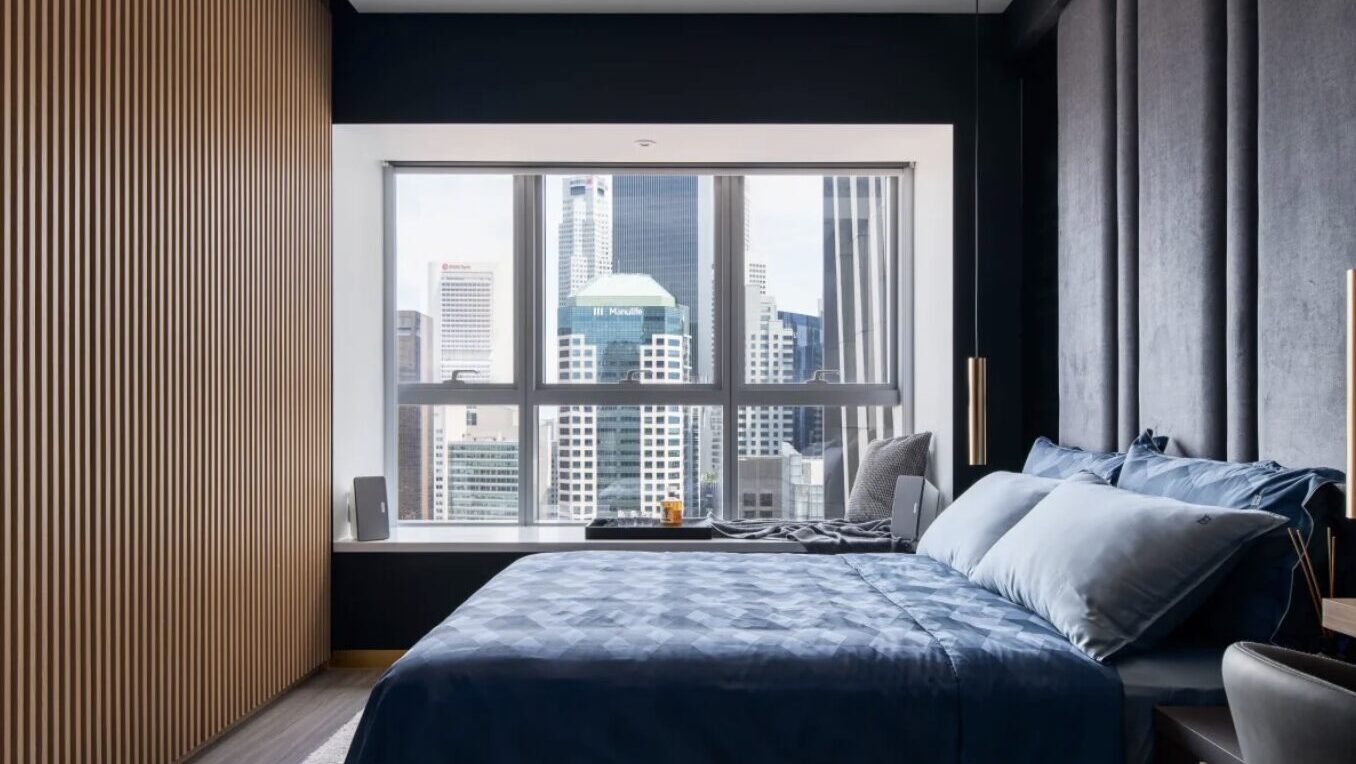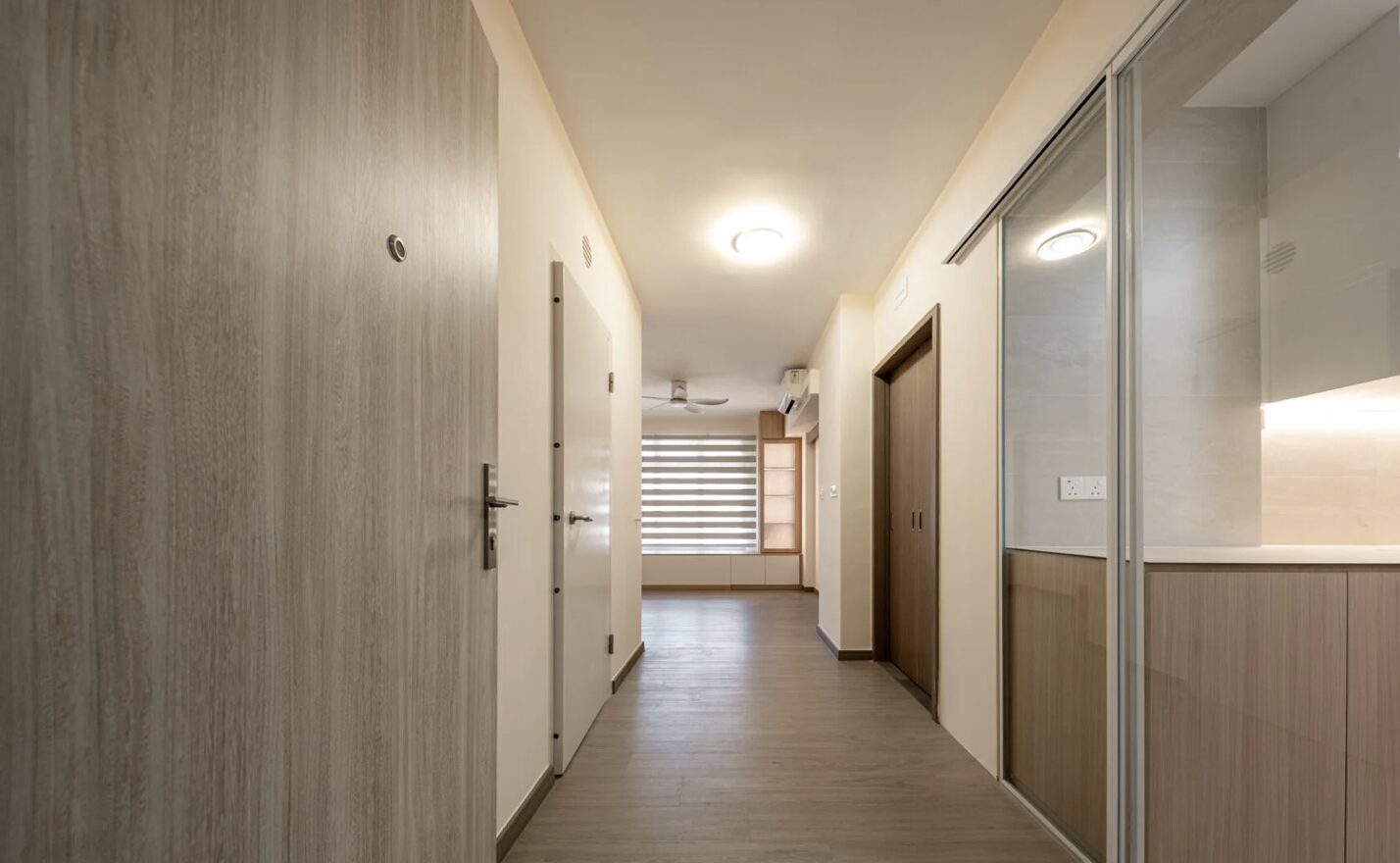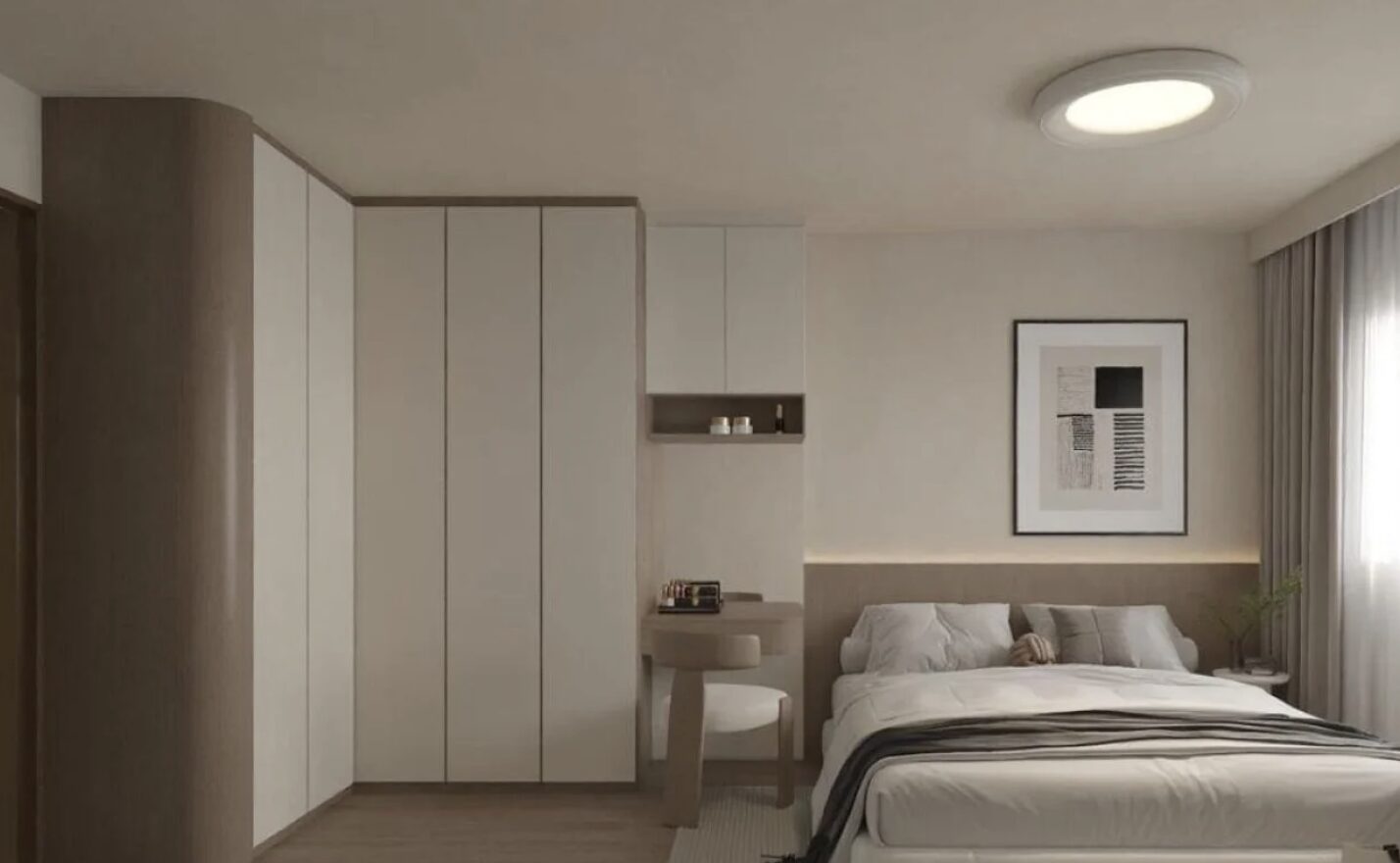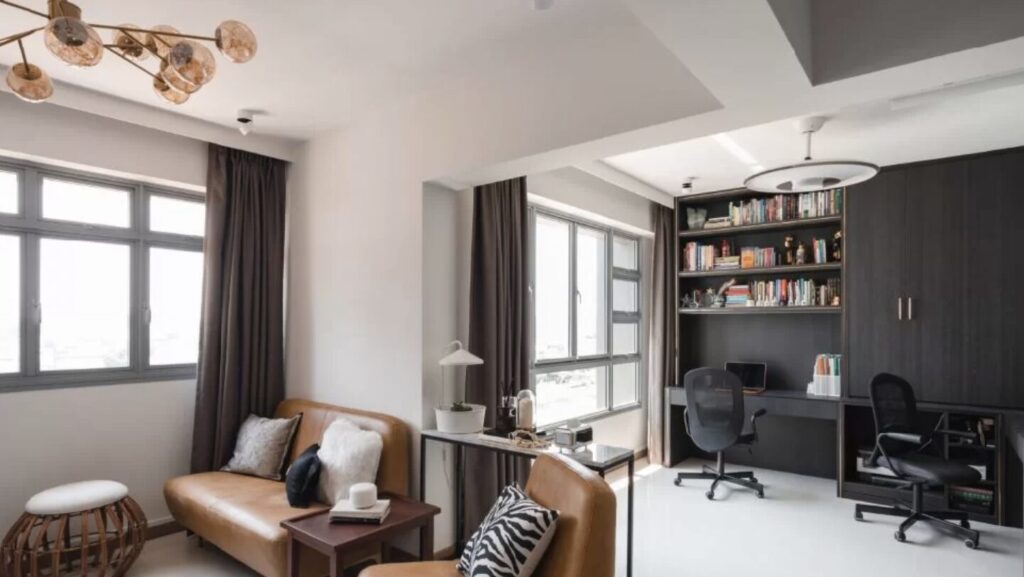Smart Design Ideas to Save Energy in Singapore Homes
| Key point | Details |
|---|---|
| Harnessing Natural Light | By maximising daylight with strategic window placement, reflective surfaces, and light-coloured finishes, homes require less artificial lighting, lowering electricity consumption while creating a soothing atmosphere throughout. |
| Optimising Airflow and Ventilation | Promoting natural cross-ventilation, installing ceiling fans, and maintaining unobstructed airflow minimises dependence on air conditioning, keeping interiors airy, cool, and energy-efficient in Singapore’s tropical climate. |
| Smart Technology for Energy Awareness | Integrating smart features, such as motion-sensor lights, thermostats, and energy-monitoring plugs, encourages awareness of energy usage and automates savings, making energy efficiency seamless and instinctive in daily life. |
| Sustainable Material Choices | Using materials like Low-E glass, bamboo flooring, and eco-friendly paints helps insulate the home, reduce heat gain, and lower long-term energy needs, all while supporting environmental responsibility with stylish choices. |
| Effective Layout and Space Planning | Arranging spaces to maximise natural light and ventilation, adopting open-plan designs, and positioning high-use areas near windows guide households toward habitually conserving energy in a natural, unconstrained way. |
| Lifestyle Benefits Beyond Energy Savings | Thoughtful, sustainable design supports better health, increased mindfulness about consumption, and enhanced comfort, nurturing a lifestyle where saving energy is effortless and elegantly woven into everyday routines. |
In Singapore, where tropical heat and rising energy costs are part of everyday life, the idea of home design has evolved beyond aesthetics. A truly smart home isn’t just one filled with the latest devices — it’s one that quietly encourages sustainable habits. From the way light enters a room to how air circulates and how technology interacts with our routines, design can gently nudge homeowners toward energy-conscious living without ever feeling forced.
When spaces are planned with purpose, energy savings happen naturally. A well-designed home aligns beauty with function, turning small design decisions into lasting environmental impact.
Harnessing Natural Light
Natural light remains one of the most elegant and effortless ways to reduce energy consumption. When harnessed properly, daylight can illuminate interiors, enhance wellbeing, and eliminate the need for artificial lighting during most of the day. In many Singapore apartments, designers use reflective surfaces, glass partitions, and light-coloured finishes to invite daylight deep into the home. Instead of harsh overhead bulbs, layered lighting ensures brightness is adjusted thoughtfully — a soft glow in the evening, ambient light for daily use. This not only saves energy but creates a calmer visual experience throughout the day.
To keep interiors bright yet comfortably cool, consider solar control films like those from Miredo. They help minimise heat gain without blocking natural daylight — a subtle upgrade that enhances both comfort and efficiency in Singapore’s tropical climate. Designing with light is about more than brightness — it’s about rhythm. When daylight becomes the primary source of illumination, homeowners naturally sync their routines with the environment, reducing dependency on constant electricity use. For more inspiration, you might find these affordable interior design ideas for Singapore’s HDB living useful.
Tip: Position reading corners, study tables, or dining areas close to windows to take full advantage of natural light. Pair this with sheer curtains and matte finishes to balance glare and create gentle, diffused illumination.
Optimizing Airflow and Ventilation
Air conditioning is often seen as essential in Singapore’s tropical climate, but homes can be designed to breathe naturally. Cross-ventilation, ceiling fans, and strategic window placement reduce the need for mechanical cooling, while keeping interiors airy and fresh.
In a compact HDB flat, for example, aligning windows on opposite walls allows air to flow continuously through the home. Even subtle architectural elements — like louvered screens, vent blocks, or open shelving — can enhance ventilation without compromising privacy.
When air moves freely, the home feels lighter, fresher, and more alive. Over time, this encourages residents to reach for the window latch before the AC remote — a quiet yet powerful shift in daily behavior. Discover more interior design tips that can help you stay cool at home in Singapore.
Tip: Keep airflow paths unobstructed and install ceiling fans with wide blades to improve circulation. Combining gentle airflow with breathable fabrics and lighter curtains keeps interiors cool while minimising AC reliance.
Smart Technology That Encourages Energy Awareness
Smart home technology transforms energy-saving into second nature. With automation and real-time feedback, homeowners become more aware of their consumption patterns — and can easily adjust them.
Motion-sensor lighting ensures spaces aren’t illuminated unnecessarily. Smart thermostats regulate temperature based on occupancy. Energy-monitoring plugs reveal which appliances draw the most power. Together, these technologies promote mindful consumption while maintaining comfort.
Smart lighting systems, such as those from DW Home, offer intuitive control over brightness and timing. With features like motion sensing and remote dimming, homeowners can effortlessly reduce electricity use while maintaining the right mood in every space. When integrated seamlessly into a home’s design, smart systems don’t feel like tech—they feel intuitive, part of the home’s quiet rhythm. You can learn how to transform your home with smart home technology in Singapore for seamless integration.
Tip: Install smart switches and energy-efficient appliances that can be controlled remotely. Over time, the convenience of automation naturally builds a habit of turning off what’s not needed.
Material Choices for Sustainable Living
Energy-efficient living begins with material selection. The right surfaces, finishes, and fixtures can influence both comfort and long-term energy use.
For instance, Low-E glass windows minimise heat gain while maintaining brightness. Bamboo or cork flooring offers natural insulation, keeping spaces cooler. Even lighter paint colours and matte finishes can reduce the need for additional lighting.
Finishes also play a vital role. Eco-friendly paint and reflective coatings, like those offered by Singapore Painting Service, can help reduce indoor heat absorption while enhancing brightness — a small design detail that contributes to long-term energy savings. For inspiration on embracing sustainability in interiors, explore these simple ways to refresh your interiors naturally.
A well-chosen palette of materials can quietly support sustainability. The home feels balanced and comfortable year-round, reducing the urge for excessive cooling or lighting — proving that sustainability and sophistication can coexist.
Tip: Choose materials that support insulation and reflectivity, such as light-toned wood or eco-friendly tiles. These subtle design choices contribute to cooler, more energy-efficient spaces without sacrificing aesthetic warmth.
Layout and Space Planning That Shapes Habits
Design isn’t only about form — it’s about behavior. A thoughtfully arranged space can gently guide residents toward more energy-efficient habits.
An open-plan layout allows air to move more freely, making the home feel naturally ventilated. Positioning work zones near windows reduces reliance on artificial light. Smart plugs and visible switches in high-traffic areas serve as everyday reminders to conserve energy. Even furniture placement — keeping paths clear for airflow — can have an impact.
When the home’s layout aligns with daily routines, sustainability becomes instinctive rather than imposed. Residents move, switch off, and open windows as part of a seamless pattern of living. If you’re considering layout updates, review why you should go with an open concept living room for better energy flow.
Tip: Arrange your most-used areas — the dining table, workspace, or play area — near sources of natural light and ventilation. The more comfortable these spaces feel naturally, the less you’ll rely on electricity to enhance them.
Lifestyle Benefits Beyond Energy Savings
Smart design does more than lower utility bills — it reshapes the way we live. Homes that optimise light, airflow, and efficiency nurture a calmer, healthier rhythm. Natural illumination improves mood, good ventilation enhances air quality, and thoughtful materials create a sense of balance.
Over time, these design choices foster mindfulness. Householders become more conscious of consumption, more connected to their surroundings, and more attuned to sustainable living. If you wish to subtly transform your lifestyle and your household’s future, consider these tips for green living and making your home sustainable. The result is a lifestyle that feels effortless — where saving energy isn’t a chore, but a way of life.
Energy efficiency begins long before the first light switch is flipped — it starts with design intention. When a home is shaped around natural light, cross-ventilation, sustainable materials, and intuitive technology, energy-saving becomes second nature.
The most successful designs don’t demand effort; they quietly influence behavior. Through thoughtful planning and aesthetic sensitivity, Singapore homeowners can create spaces that are comfortable, efficient, and beautifully aligned with a sustainable future.
FAQ
1. How does harnessing natural light save energy in Singapore homes?
Harnessing natural light can significantly reduce the need for artificial lighting during the day, minimising electricity consumption. Well-placed windows, reflective surfaces, and light-coloured finishes help maximise daylight while also creating a calming visual atmosphere.
2. What are the best ways to improve ventilation in tropical homes without excessive air conditioning?
Cross-ventilation through strategically placed windows, the use of ceiling fans, and maintaining clear airflow paths are effective ways to keep interiors cool and fresh without relying heavily on air conditioning.
3. How can smart home technology promote energy-saving habits?
Smart home technology like motion-sensor lights, smart thermostats, and energy-monitoring plugs make homeowners more aware of their consumption and automate power savings, making it easier to adopt efficient routines.
4. What kind of materials can help a home stay cool and energy-efficient?
Materials such as Low-E glass windows, bamboo or cork flooring, and light-coloured, reflective finishes help insulate interiors and reduce heat gain, leading to a cooler, more energy-efficient home environment.
5. Why does layout and space planning matter for sustainable living?
Thoughtful space planning—such as using open layouts or positioning frequently used areas near windows—not only enhances comfort but also naturally encourages behaviors that save energy by maximising light and airflow.
Are you looking to upgrade your space? Look no further! Drop us an enquiry at [email protected] and let us help you transform your home into a smart and efficient living space. Our experts are here to assist you in finding the perfect smart home devices to suit your needs and enhance your lifestyle.
Designing your dream home can be an exciting journey, but it can also be overwhelming. With so many options and styles available, it can be challenging to decide what is best for you and your family. However, by considering factors such as functionality, color palette, furniture, materials, and personal style, you can create a space that is not only beautiful but also practical and comfortable.
When it comes to achieving a successful interior design project, choosing a provider with a rock-solid reputation and exceptional skills is paramount. At Redbrick Homes, we understand that inspiration is key. That’s why our top-quality interior design partners are ready to wow you with beautiful, personalized spaces brimming with exceptional Singaporean ideas.
Remember to take your time, do your research, and work with a professional if needed. With the right interior design choices, you can transform your house into a dream home that you’ll enjoy for years to come.









